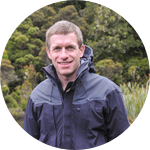About This Project
The iconic kakapo is a flightless, nocturnal parrot endemic to New Zealand. More breeding territories are needed to increase population size. Little Barrier Island could broaden not only breeding territory but also food sources and hence diet.
This project asks three important questions. Firstly, what vegetation exists on Little Barrier Island? Secondly, would the island offer quality chick feed? and lastly, will there be enough?
Ask the Scientists
Join The DiscussionWhat is the context of this research?
The kakapo (Strigops habroptilus) was once ubiquitous across New Zealand. It is now critically endangered. Currently there are only 125 kakapo in existence. (plus a possible 33 new chicks from the 2016 breeding season!). They are now exiled to New Zealand’s remote offshore predator free islands.
Kakapo feed on the fruits, seeds, foliage, bark and stems, bulbs and roots of native plants. Particularly prevalent on the south offshore islands is rimu fruit. When rimu trees undergo a masting cycle and abundant fruit is available, the female kakapo are triggered into breeding.
What is the significance of this project?
The amazingly successful 2016 breeding season yielded 33 new chicks!
We now need to investigate expanding breeding territories. This hopefully will lead to a further increase in population size. Increasing the numbers of female kakapo is especially important.
The importance of utilising Little Barrier Island as a breeding site is substantial. This project could broaden not only breeding territory but also food sources and hence diet.
What are the goals of the project?
There are three goals to this project.
The first is to identify and map the different food species that exist on the island. We know kakapo eat kauri, beech and podocarp so we need to check if these species thrive on Little Barrier Island and where. We will accomplish this using aerial imaging.
Secondly, we need to determine if the island would offer quality chick feed. Female kakapo need nutrient rich seed to feed their chicks. We will examine and compare the nutritional composition of seeds of the kauri, beech, and podocarps on the island.
Lastly, we need to know if there is enough food for kakapo mothers to breed there. We need to check when the island experiences masting events to predict when the next possible breeding year for kakapo could be.
Budget
The initial $2500 goal will commence this project. We need to raise more to reach completion.
Endorsed by
Lab Notes
Nothing posted yet.
Additional Information
This project is expected to run for three years.
Our initial goal of $2500 is to get started as per our budget outline. Update -This has been achieved!
Project Backers
- 99Backers
- 172%Funded
- $4,314Total Donations
- $43.14Average Donation

